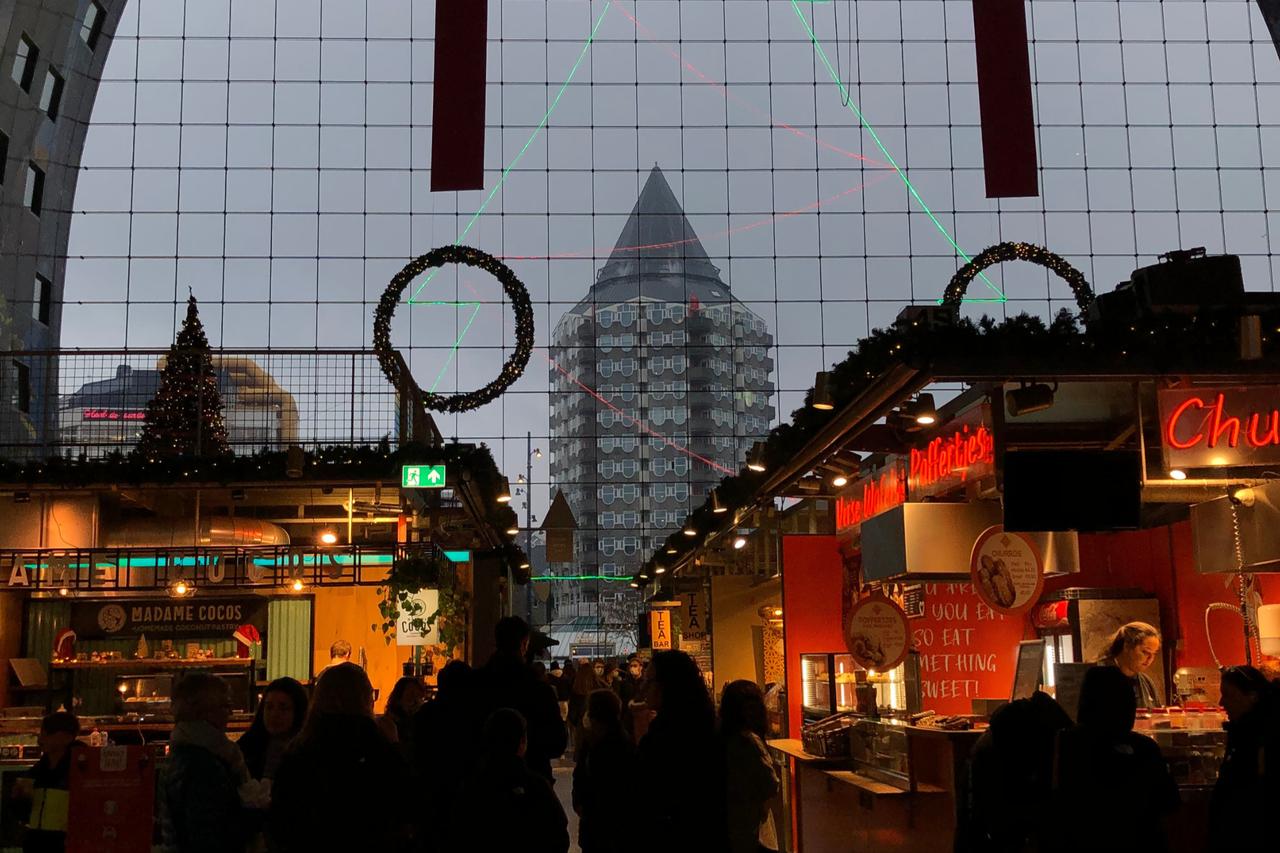
Few European cities tell their story of rebuilding and revival as visibly as Rotterdam.
When the city lay in ruins after World War II, Rotterdammers decided not to recreate the past but to design a new future where nothing feels out of place.
The result is a city that feels both futuristic and deeply human, where glass towers rise beside surviving canals and cranes frame the skyline alongside church spires. Rotterdam’s architecture shows how the city keeps changing with its people while letting fragments of the past stay part of its everyday life.
As someone who has briefly lived there, I can tell you that this way of thinking defines Rotterdamers themselves. They are practical, deeply attached to their city, and prefer action over endless discussion. They like to see ideas take shape, to test things, to build and adjust as they go. What they create is functional, usable, and accessible, yet it always manages to catch your attention and hold it.
Their approach to design does not necessarily follow classical beauty ideals, and that alone sets Rotterdam apart from Amsterdam and The Hague. Several buildings and public artworks are not meant to be admired but to be noticed, questioned, and sometimes chuckled at later.
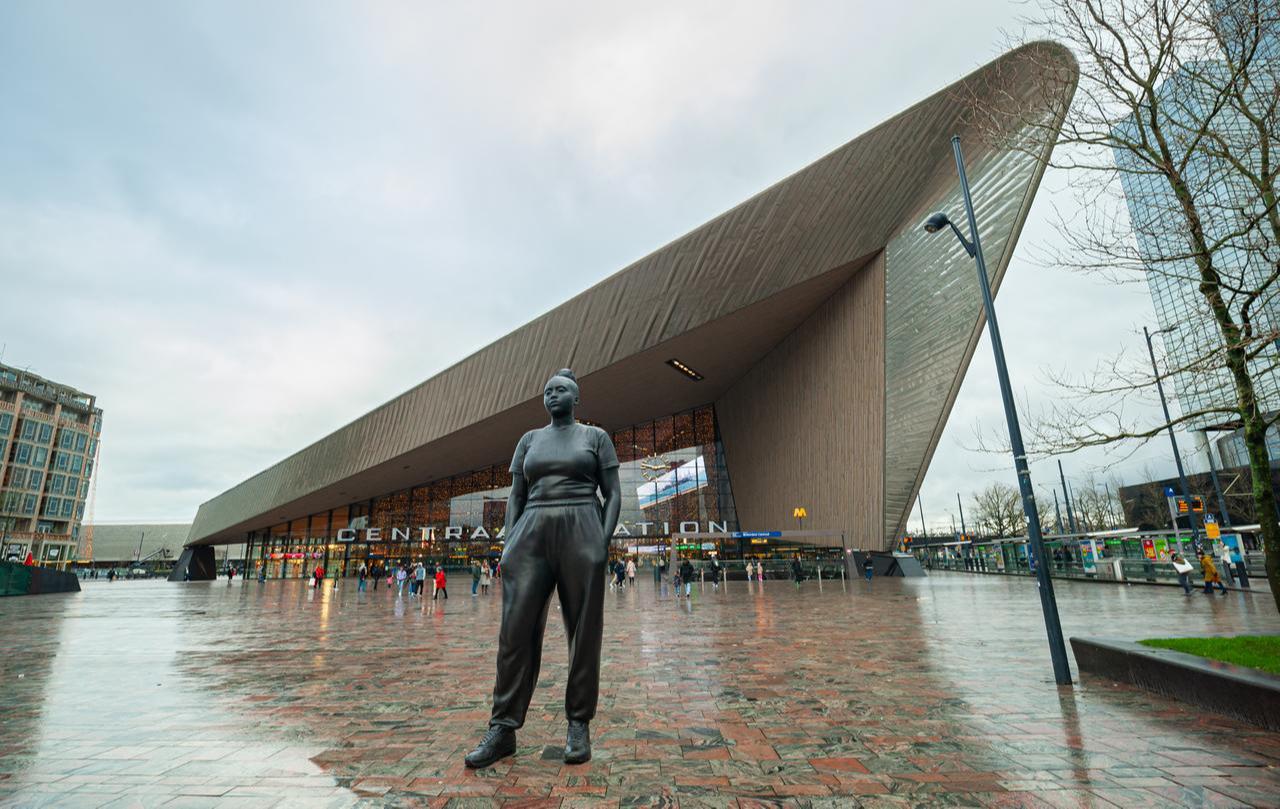
Nonetheless, Rotterdam’s identity extends beyond its architecture. Shaped by centuries of migration, it is often described as the Netherlands’ “majority-minority” city, home to more than 180 nationalities.
Its neighborhoods are bound by the stories of people who arrived from Türkiye, Suriname, Morocco, Cape Verde, and Indonesia, among many others. Markets and cafés carry these influences in the smell of spices, the sound of music, and the languages heard on every tram.
This diversity has made Rotterdam a living experiment in coexistence. Every district feels distinct, yet the rhythm of the port and the openness of its people connect them all.
It also has a diverse art scene, strengthened by the city’s long-term commitment to culture. Rotterdam has transformed former port sites, industrial halls, and civic buildings into museums, galleries, and studios, ensuring that creativity remains part of its economic and social fabric.
Rotterdam’s character is best understood through its neighborhoods, each showing a different face of the city’s ongoing change and growth.
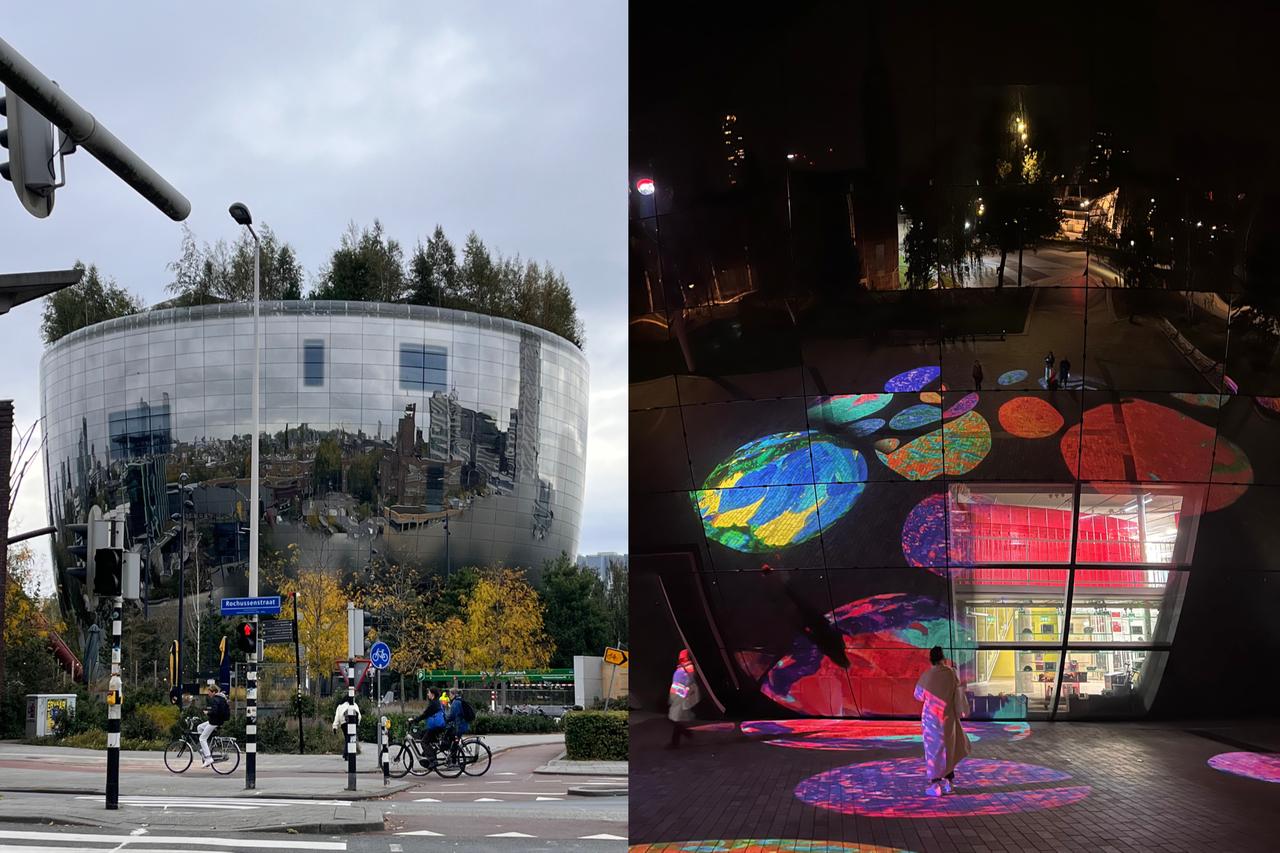
Museumpark is one of the few places in Rotterdam where the city’s pace seems to slow down without losing its energy.
Once known as the Land van Hoboken, this area was open land on the edge of the old center until the mid-20th century, used for gardens and villas belonging to wealthy families. What remains of that green openness now lies between museums that look as if they were built in conversation with one another.
The Depot Boijmans Van Beuningen by architecture firm MVRDV rises at the center like a curved mirror, catching the park, the sky, and anyone walking by. During the day, it looks like a glass vessel balancing clouds, but at night, its surface turns the surrounding lawns and paths into a moving pool of light.
Inside, the public can see thousands of artworks that would usually stay hidden in storage. The idea of turning an archive into an accessible space feels very Rotterdam: useful, accessible, open, and direct.
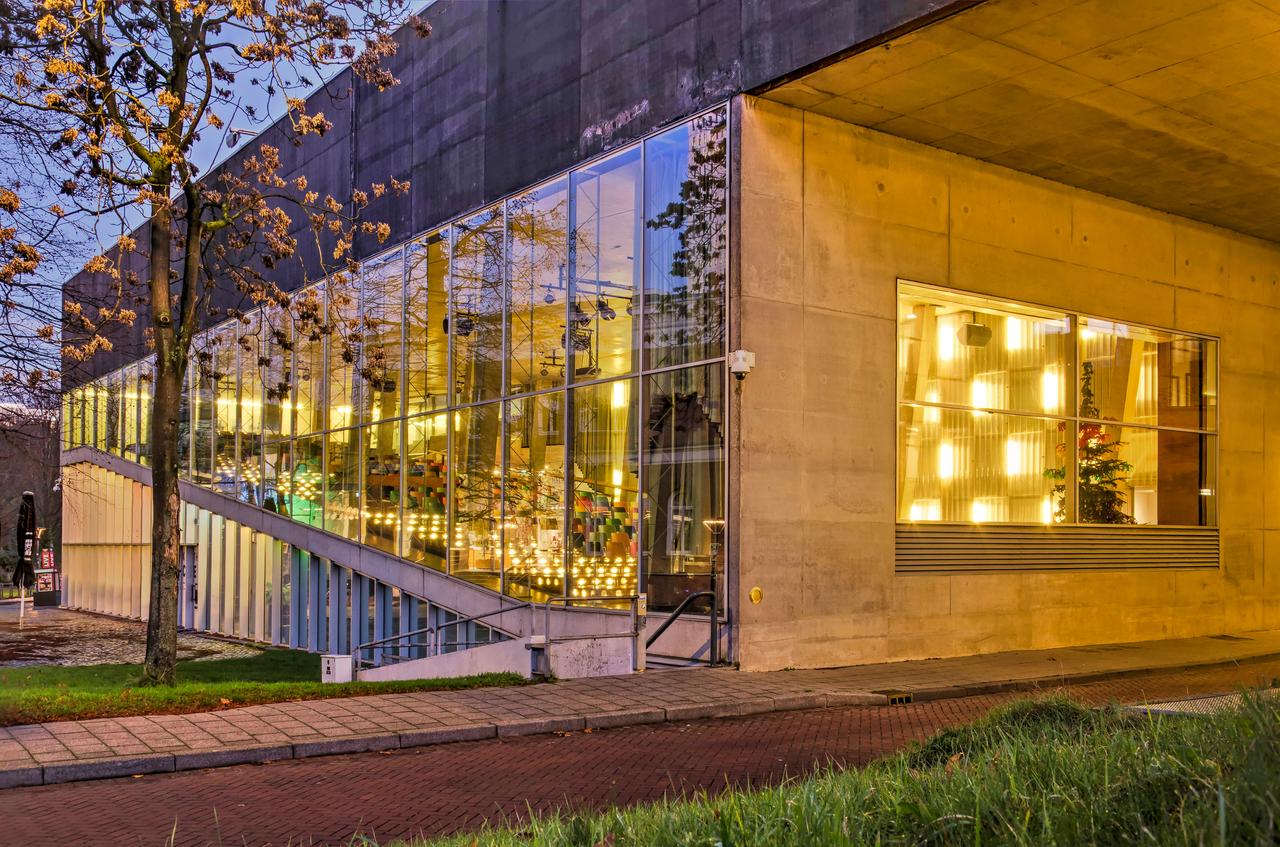
Across the park, the Kunsthal by Rem Koolhaas folds ramps and bridges into a building that feels more like a route than a structure.
The Natural History Museum, with its traditional façade, and the Chabot Museum, with its white plaster and clean geometric lines, stand nearby, keeping traces of an earlier Rotterdam visible.
The Nieuwe Instituut connects them through exhibitions about design and the built environment, keeping the area in quiet dialogue with itself.
People come here to see art, but also break away from the hubbub of the busy city. Students cross the lawns on bikes, children play between sculptures, and office workers eat lunch under the trees.
Unlike in most cities, Rotterdam’s museum quarter is not a place you visit only for its museums, but a space where you can rest and still be surrounded by art. It is a working part of the city; open, unpretentious, and quietly full of life.
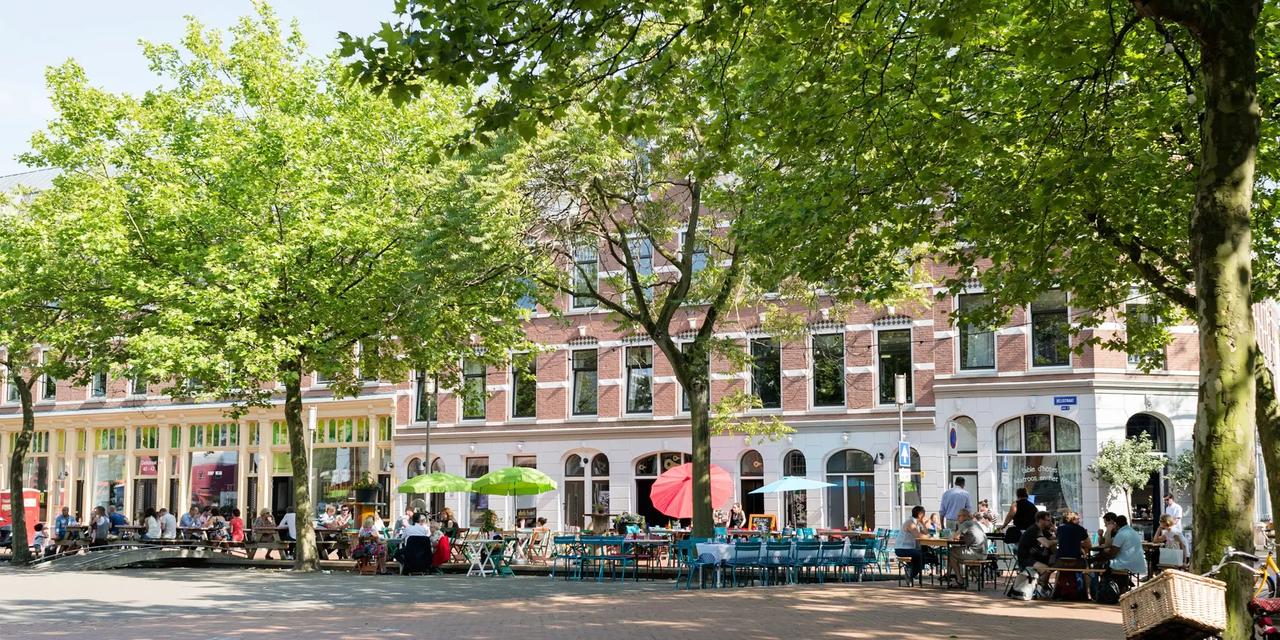
Kop van Zuid is where Rotterdam’s maritime past meets its most striking modern skyline.
Between the late 1800s and the 1970s, this southern riverbank served as the city’s main port area, filled with warehouses, cranes, and the offices of the Holland America Line, where millions once set sail for America.
After decades of decline, the area began a new chapter in the 1990s, when old docks and shipping depots were redeveloped into a modern urban district.
Today, the same waterfront where ships once departed for distant continents is lined with high-rises, restaurants, and cultural spaces that have kept the character of the working port while opening it to the public.
The Erasmus Bridge, often called the “Swan,” connects the city’s north and south like a sculptural thread. Beside it, Rem Koolhaas’s De Rotterdam towers over the river with its stacked glass volumes, a vertical city in itself.
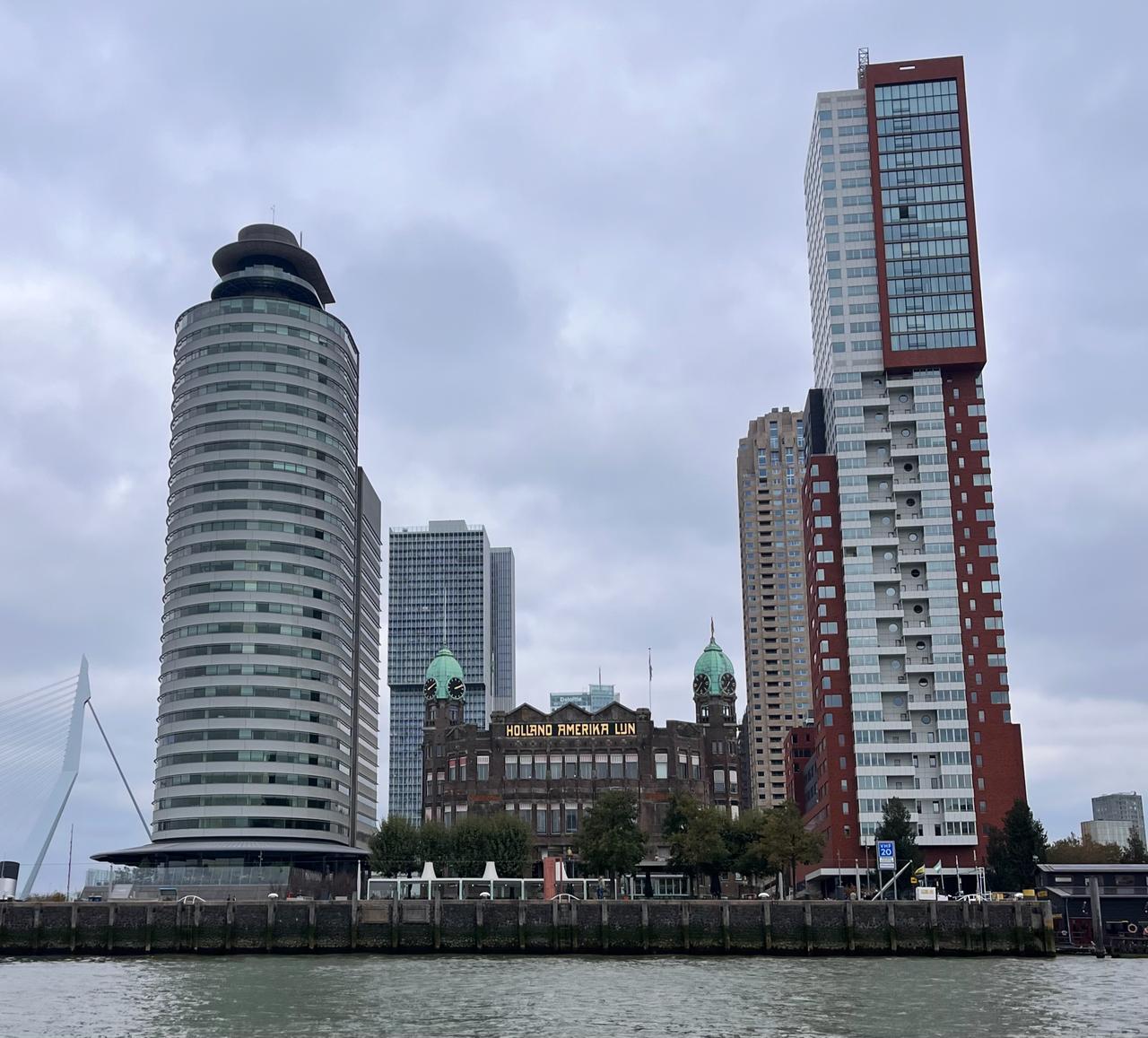
Yet among these symbols of new Rotterdam, the historic Hotel New York still stands with its green copper turrets, once the departure point for emigrants heading to America. Its interior, filled with maps, suitcases, and maritime details, carries the same mixture of nostalgia and movement that defines the area.
A few steps away stands the Nederlands Fotomuseum, housed in the renovated Las Palmas building, once a workshop for the Holland America Line. Since the 1980s, it has safeguarded one of Europe’s largest photographic archives, holding more than 6 million images that trace the evolution of Dutch visual culture.
The museum is preparing to move to a new home this autumn, the restored Santos warehouse on the opposite side of Rijnhaven. With its eight floors, the building will not only hold exhibitions but also open the museum’s vast collection to the public, continuing Rotterdam’s habit of giving industrial heritage a new life through culture.
Crossing the pedestrian bridge toward Katendrecht, the skyline gives way to smaller streets and former dockyards that once housed sailors, traders, and migrants. For decades, this peninsula was known as Rotterdam’s red-light and sailors’ district, home to one of mainland Europe’s first Chinatowns and communities from Cape Verde, Suriname, and Indonesia.
The area has since evolved into one of the city’s most distinctive neighborhoods, filled with restaurants, cafés, and creative spaces that feel lived-in rather than polished.
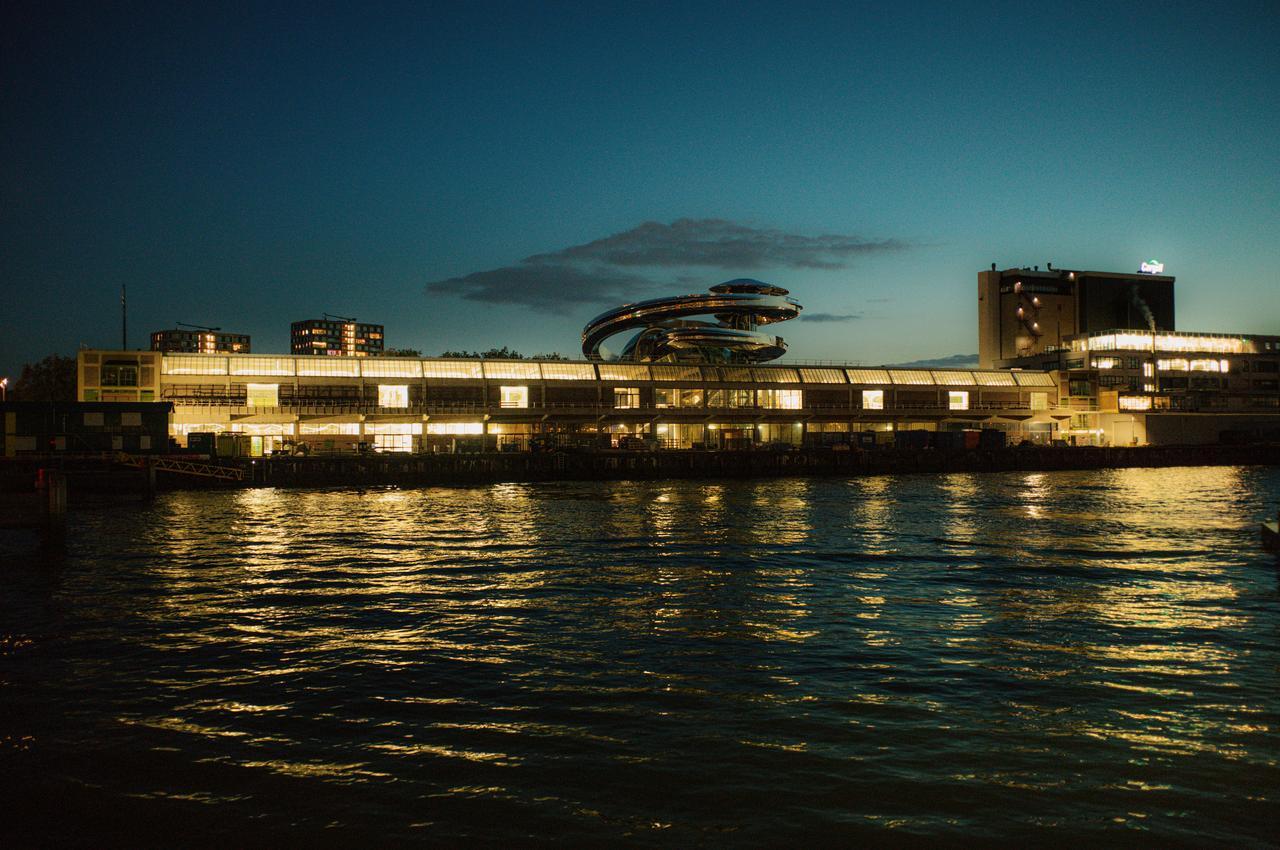
At its center stands the Fenix Museum of Migration, located in the historic Fenix II warehouse. Designed by MAD Architects, the building’s swirling steel staircase rises through the heart of the museum and leads to a rooftop terrace overlooking the Maas River.
Inside, exhibitions explore migration as a shared human experience through personal stories, objects, and art installations. I visited twice earlier this year, and each time the atmosphere felt both intimate and expansive. As a Turkish person living abroad, it was comforting to feel seen, to share a sense of belonging with others, and to realize that migration here is not a story of distance but of connection.
Nearby, the Fenix Food Factory, a cooperative of local producers, adds the scent of bread and roasted coffee to the riverside air. With the sound of passing ships and the faint hum of conversation, Katendrecht feels like a place that keeps rewriting itself without erasing what came before.
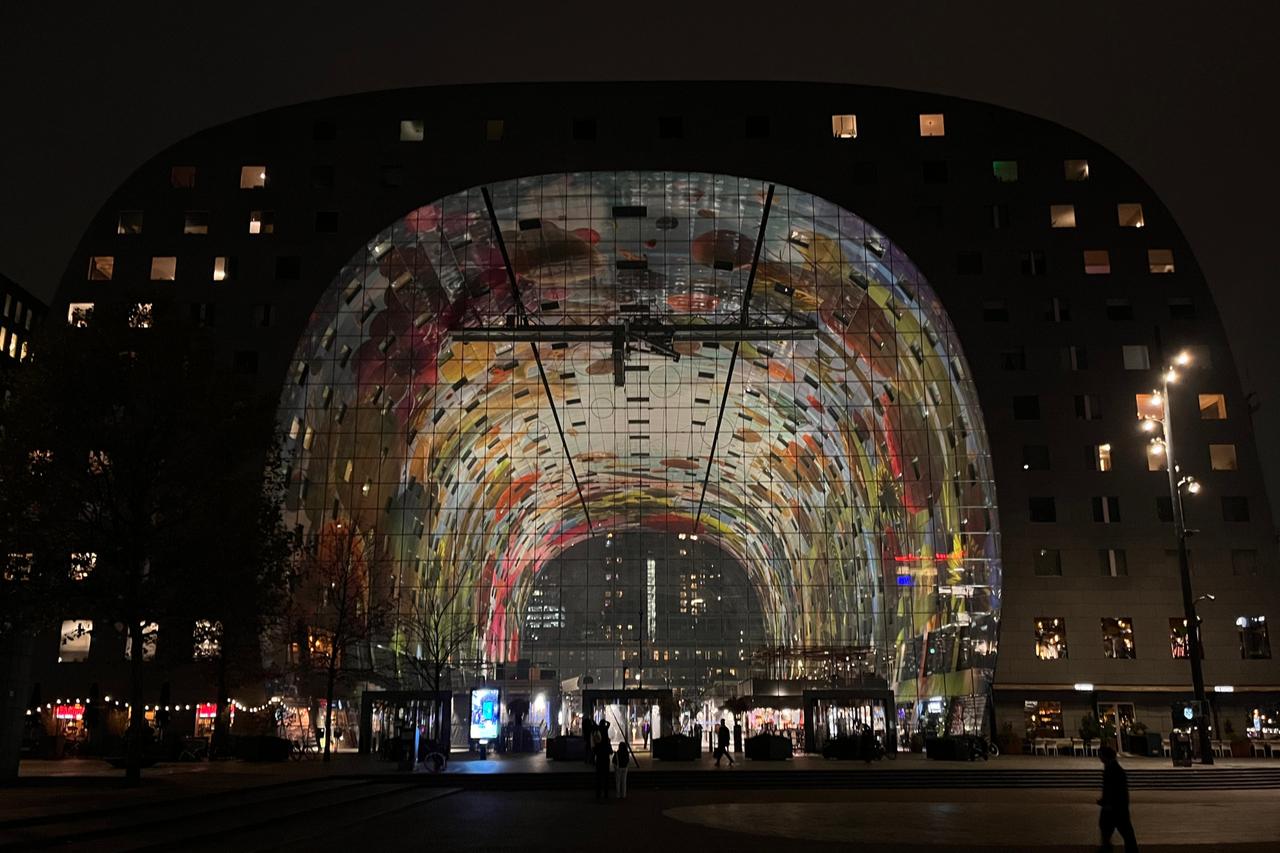
Blaak is the heart of modern Rotterdam, where the city’s boldest architecture meets its everyday rhythm.
Around the train station, the Markthal’s vast glass curve, the sharp geometry of the Cube Houses, the yellow steel library, and the medieval St. Laurenskerk all surround a square that never quite stands still.
Every Tuesday and Saturday, the open-air market on Binnenrotte square fills the space beside Blaak Station with sound, color, and movement. Stallholders call out prices over the hum of conversation while children weave through the crowd and trams rattle past in the distance.
The air smells of fruit, bread, herbs, and grilled food. Vendors and visitors come from across the world, among them many from Türkiye. On those mornings, the city’s diversity becomes visible in its most ordinary form.
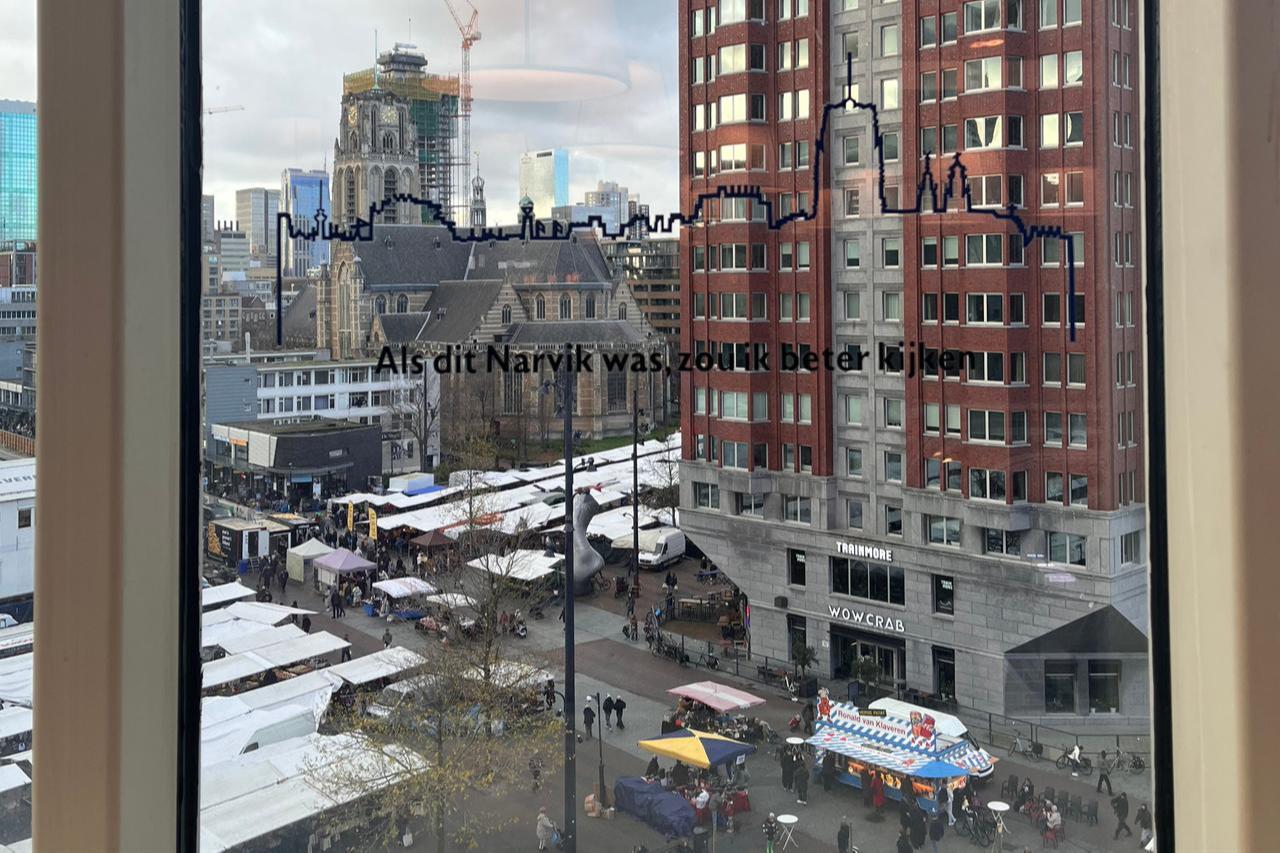
At the edge of the market stands the Markthal, designed by MVRDV in 2014. Its horseshoe-shaped arch houses apartments on both sides, with a vaulted interior covered in a mural of fruit, fish, and flowers that recalls Dutch still-life paintings.
It is both a market hall and a home, practical yet theatrical, the kind of design that perfectly fits Rotterdam. Across from it, Piet Blom’s Cube Houses from 1984 tilt above the street at sharp angles, turning housing into a piece of public sculpture.
Right across from the Markthal rises the Central Library, a bright yellow-framed building that feels more like a community center than a traditional library. I spent many days working there, surrounded by people of all ages using the space in their own way, playing chess, joining workshops, reading quietly, or simply meeting friends.
It is one of the few libraries I have seen that feels truly lived in. The building will close for renovation at the end of 2025 and reopen nearby in Librijesteeg for three years.
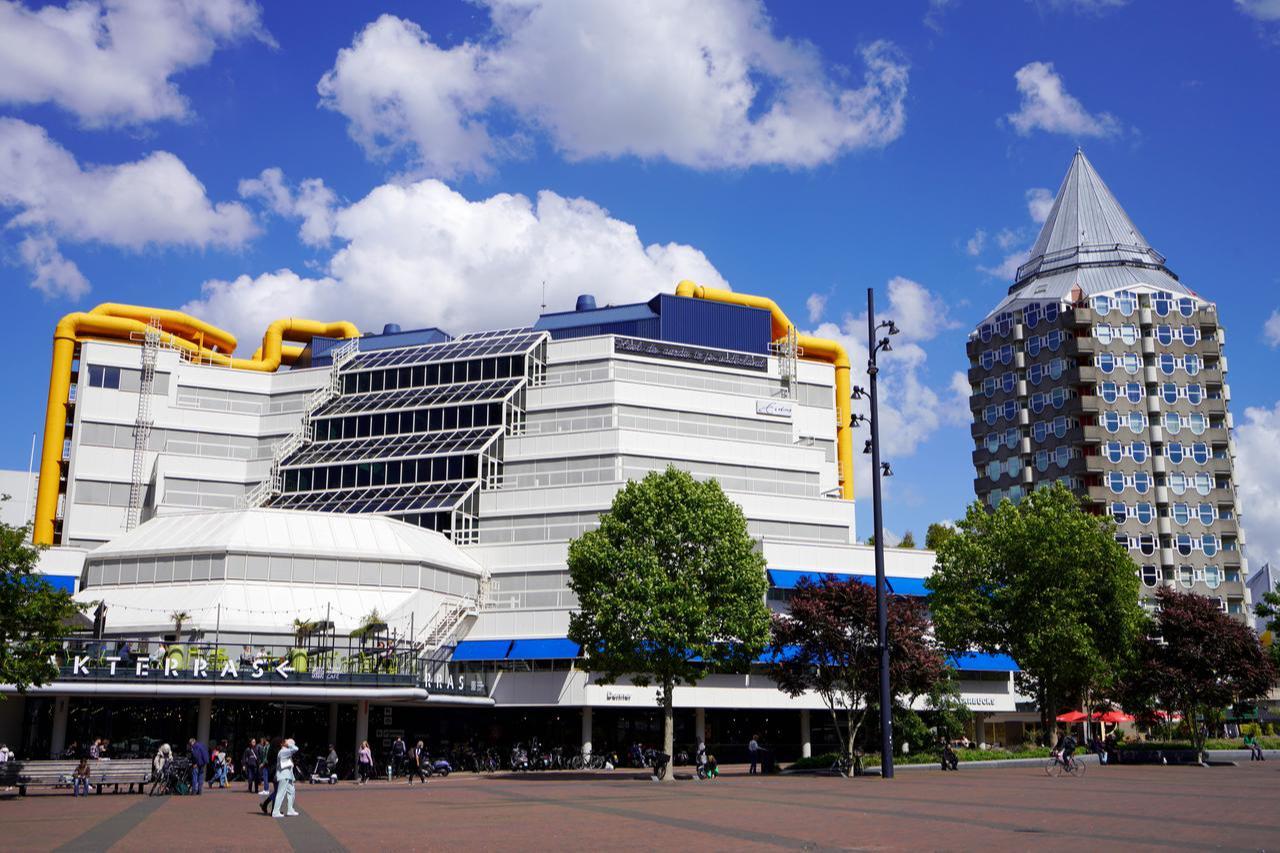
A few minutes’ walk away stands St. Laurenskerk, the city’s only surviving medieval building. Built in the fifteenth century and heavily damaged during the 1940 bombardment, it was later restored and now hosts concerts, exhibitions, and public gatherings.
Donner continues this civic energy in a different form near the main shopping street. When the bookstore faced closure in 2014, five employees and nearly 2,000 readers launched a campaign to save it.
Through crowdfunding and a cooperative model, they raised enough money to reopen Donner as an independent, partly community-owned business. It remains one of the city’s cultural anchors and a reminder that in Rotterdam, collective action speaks louder than nostalgia.
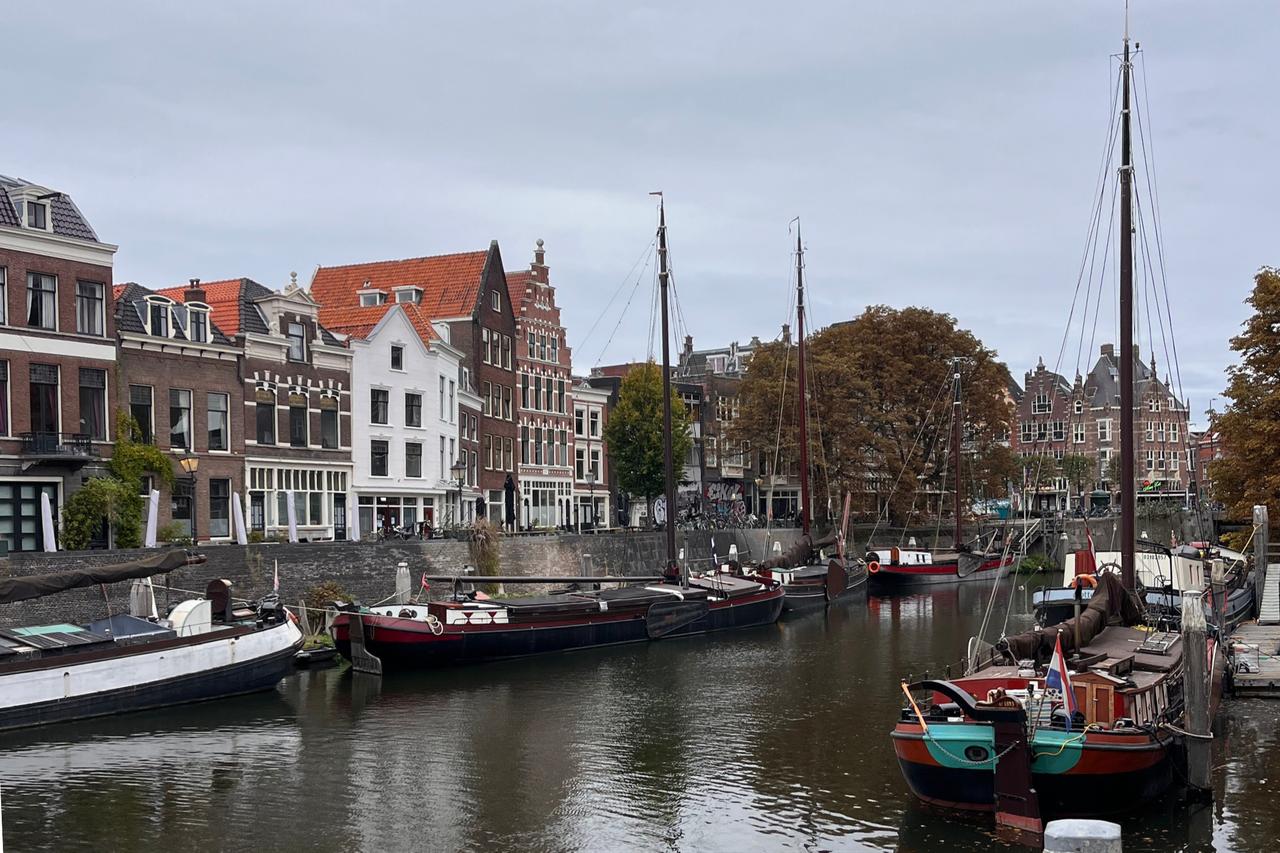
Although most of Rotterdam is filled with modern buildings, Delfshaven feels like stepping into another version of the city.
While much of Rotterdam was rebuilt after the war, this small western district survived the 1940 bombardment and kept its seventeenth-century character. The cobblestone streets, canal bridges, and gabled houses give it the look of a Dutch painting brought to life. Once the port of Delft, this was where goods, sailors, and stories passed through long before Rotterdam became Europe’s largest harbor.
The calm canals are lined with cafés, breweries, and small art studios. Near the windmill, the Pilgrim Fathers’ Church recalls the English settlers who departed from here in 1620.
Among these traces of history stands something entirely unexpected: the Dutch Pinball Museum.
Housed in De Dubbelde Palmboom, a former grain warehouse from 1825, it now holds more than a hundred playable pinball machines. The sound of clinking balls and flashing lights fills the old brick halls, making the experience all the more inviting.
Across the floors, visitors encounter machines from different eras, from the Fleet Jr. of 1934 to Dutch-made collectors’ items such as The Big Lebowski, and the only Harry Potter pinball in Europe. The collection keeps expanding and changing, so every visit feels slightly different.
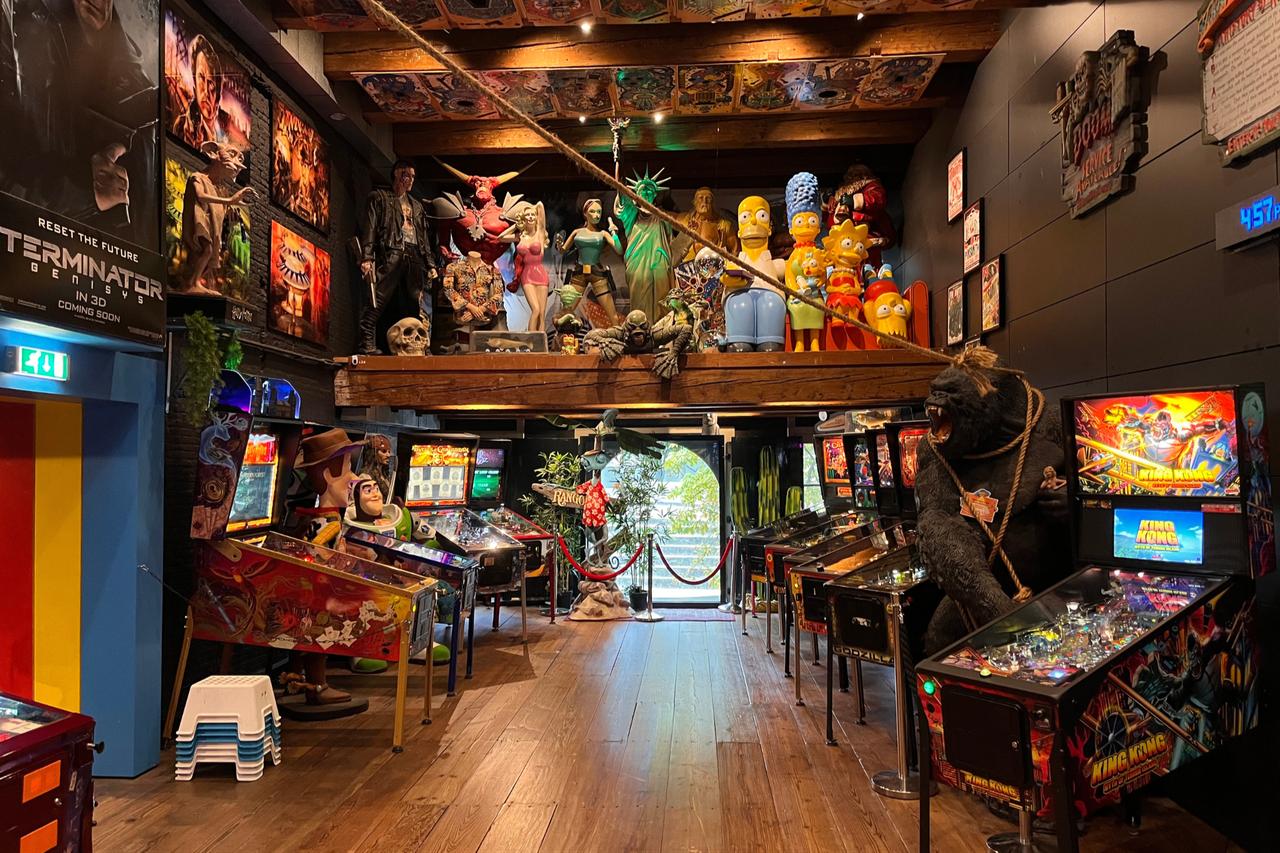
Each level has its own atmosphere, decorated with props and collectors’ items that match the pinball machines around them, from towering Jurassic Park heads to neon signs and movie memorabilia. One wall is lined with signed photos of celebrities who have visited or supported the museum, including a framed picture of Slash wearing its T-shirt.
The museum was founded by Gerard van de Sanden, whose lifelong fascination with pinball grew into one of Europe’s largest collections. It is neither a typical museum nor simply a building filled with different machines, which has been Gerard's wish all along.
Visitors are free to play and discover how the game evolved through the decades, learning its history by touching, listening, and trying.
Because repairs are costly, children and adults pay the same entry fee, and visits are booked for two-hour sessions or full-day access on Wednesdays, Saturdays, and Sundays.
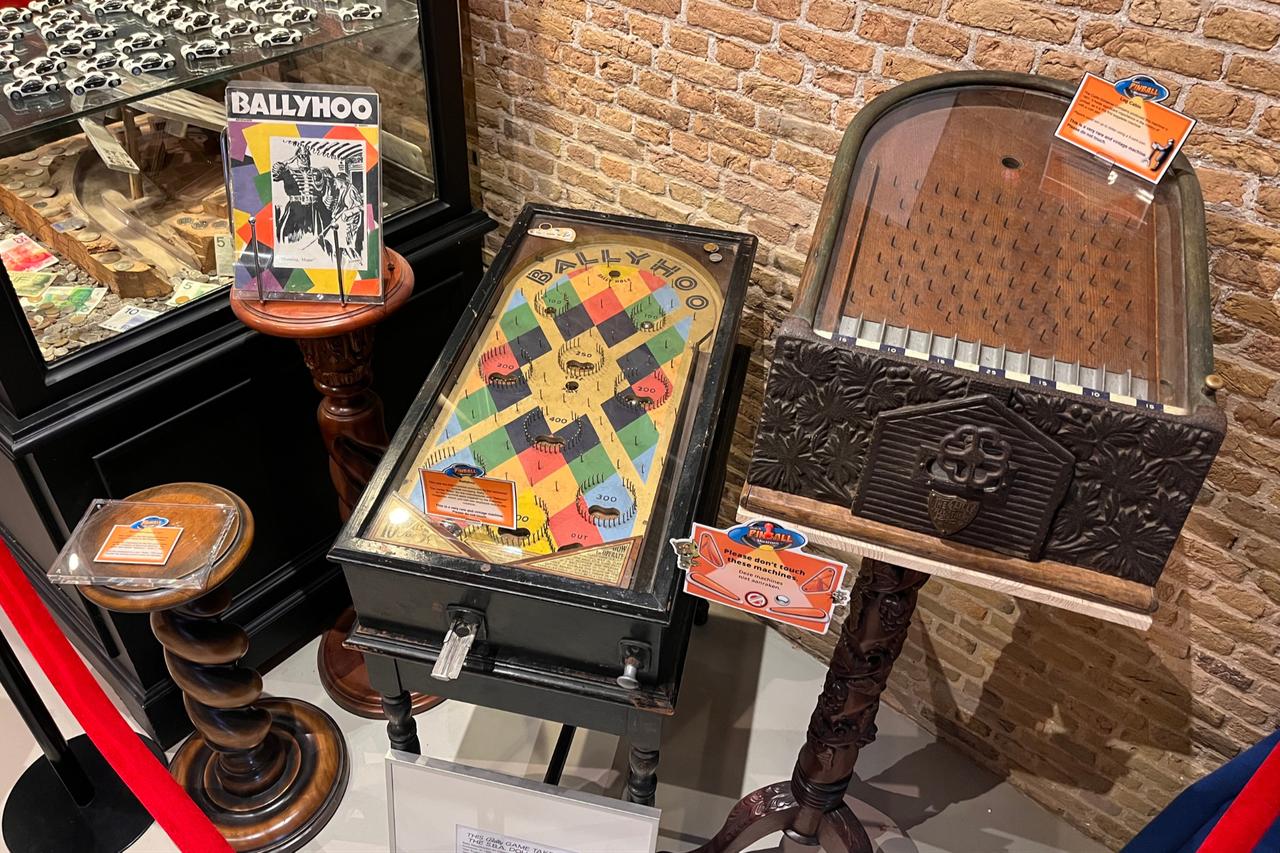
During our visit, Gerard also showed us flipperbal, an earlier Dutch tabletop game that shares its origins with the French bagatelle. He explained that while they are not the same, they share similar mechanics and the same playful curiosity that later shaped modern pinball.
Surrounded by flashing lights and mechanical sounds, it was easy to see why the museum attracts people from so far away. In fact, Gerard told me about a couple from Australia who said the Pinball Museum had been at the top of their list.
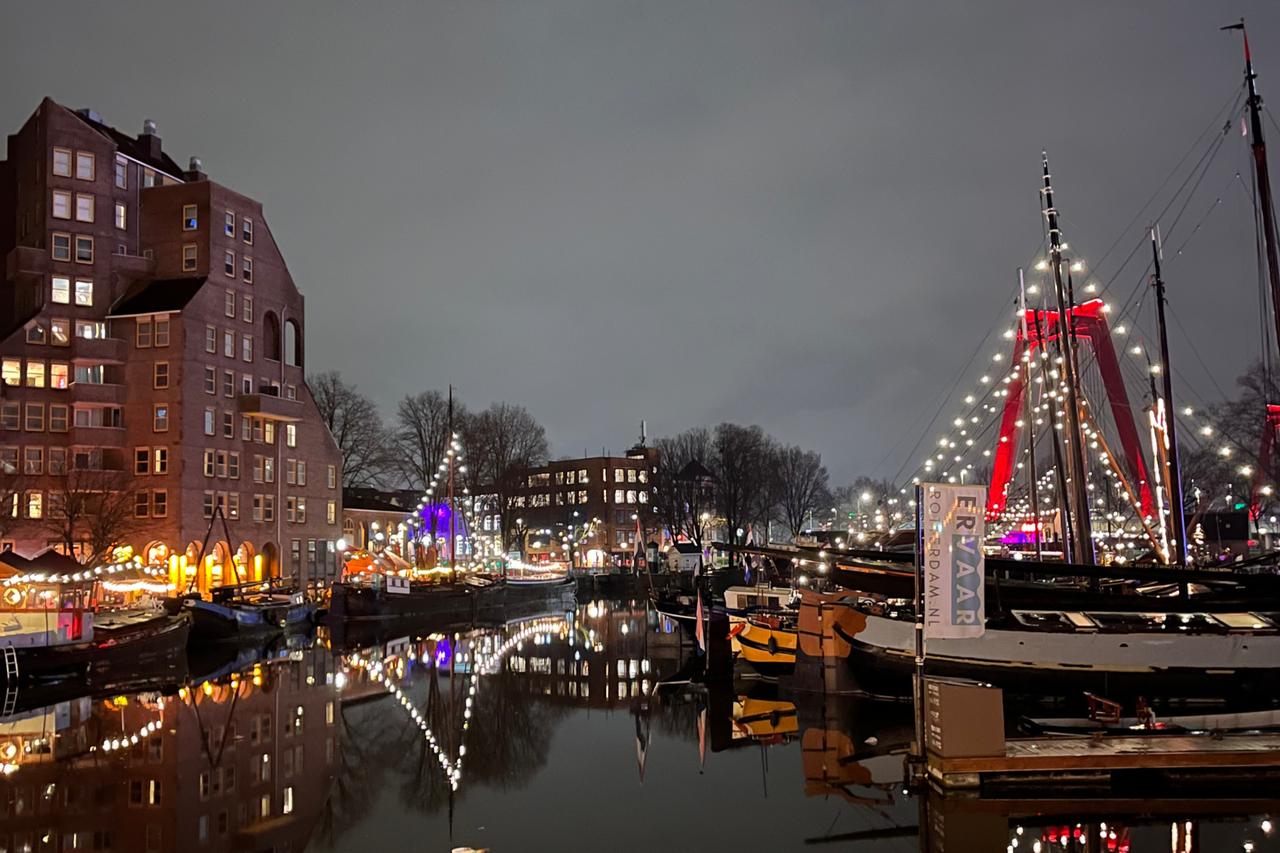
In short, yes. Rotterdam stands apart from other Dutch cities in a way that feels effortless. It is alive, practical, and constantly moving, shaped by people who build, adapt, and keep looking ahead.
The city’s rhythm is fast, but its streets and squares feel open rather than crowded, alive yet never solitary. You feel it in the sound of trams echoing through the streets, in the smell of baked goods and spices at the markets, and in the mix of languages that fills every square.
In recent years, major philanthropic investments have turned Rotterdam into an even stronger cultural center, expanding its museums, public art, and community spaces.
For instance, the public square known as the Plein, created as part of Fenix, felt empty and quiet when the migration museum first opened in May. Now it has become a lively neighborhood space, open to everyone and free to enter. On any afternoon, you might see people playing table tennis or attending events, students studying, and children running between the tables.
What makes Rotterdam worth visiting is how naturally everything fits together. The modern skyline and the old harbor, the glass towers and the canal cafés, the art and the work behind it all.
It is a city that knows exactly what it is, and that quiet certainty gives it a beauty that feels both familiar and new each time you return.